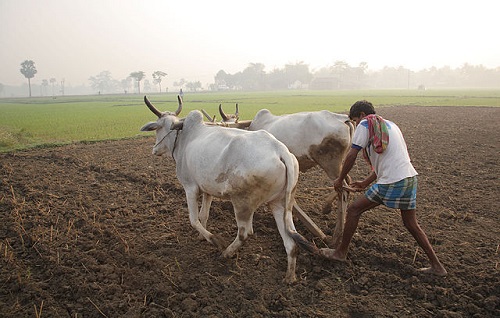The state government has rolled out a credit plan for the state’s landless farmers. Christened as Balaram, a sibling of Lord KALIA, the scheme is touted to be a one of its kind in the country. On its face, the product looks novel, for this all cash loans will be collateral free. Loans will be disbursed to five-member groups named Joint Liability Groups (JLG) who will act as ‘social collateral’ against the loans disbursed to members. In a way, each member of the group will be accountable if one of their co-members defaults on loan repayment. Each bank has been given a disbursal target based on the number of branches they operate in the state. Each lender has a target to disburse loans to at least 10 JLGs in a year. The government has identified 7 lakh farmers to benefit from the scheme to be spread over two years. Banks and primary agricultural credit cooperative societies (PACs) have been asked to extend the loans to farmers. That there are 7,000 banking outlets in Odisha, each banking unit will extend finance to 10 JLGs. Every JLG will have five members and they will get Rs 1.6 lakh each.
The target is to cover around seven lakh landless cultivators through 1.40 lakh JLGs in two years. A corpus of Rs 1,040 crore has been earmarked for this purpose. The National Bank for Agriculture and Rural Development (NABARD) will underwrite the scheme in the state. The Institute of Management of Agricultural Extension (IMAGE) and the Agricultural Technology Management Agency (ATMA) will be the nodal agencies at the state and the district levels respectively for implementation of the scheme. Balaram is different from KALIA in the sense that the former is crop loans while the disbursals under the latter were simple freebies. While, KALIA had benefited people with land parcels, Balaram aims at benefitting landless farmers who were not able to avail farm credit earlier. To ensure its seamless implementation at the field level, the government has roped in village agriculture workers (VLWs). Also, the government has instituted an incentive mechanism for effective execution of the scheme.
The timing and the nature of the scheme could not have come at a better time. At present, farmhands in villages are a harried lot due to COVID-19. A huge influx of migrant workers to rural areas has increased the density of workers in rural pockets. What they need is availability of cheap loans to them. It would help them if the government allows these workers to use this money for smalltime entrepreneurial adventures based on their skills and experiences. Agriculture is a priority sector lending for banks and Balaram will help banks to meet their target under the priority sector lending. However, it is common knowledge that commercial banks show little interest in providing loans to farmers, let alone landless farmers. That is why there are skeptics on the success of this scheme. Banks may not be too keen to take exposure unless the government brings in more clarity on how this social collateral mechanism will work at the ground level. It would be better if the government could stand guarantee for such loans. This would have given the much needed assurance to banks on the security of these loans. In the absence of this, it is still anybody’s guess how Balaram will work. Since Balaram is normal crop loans, banks need constant follow-up and monitoring to disburse such credit to the beneficiaries. Officers at the state level and at the district level must not only be roped in but brought under an incentive scheme linked to targets for eventual success of this scheme.
